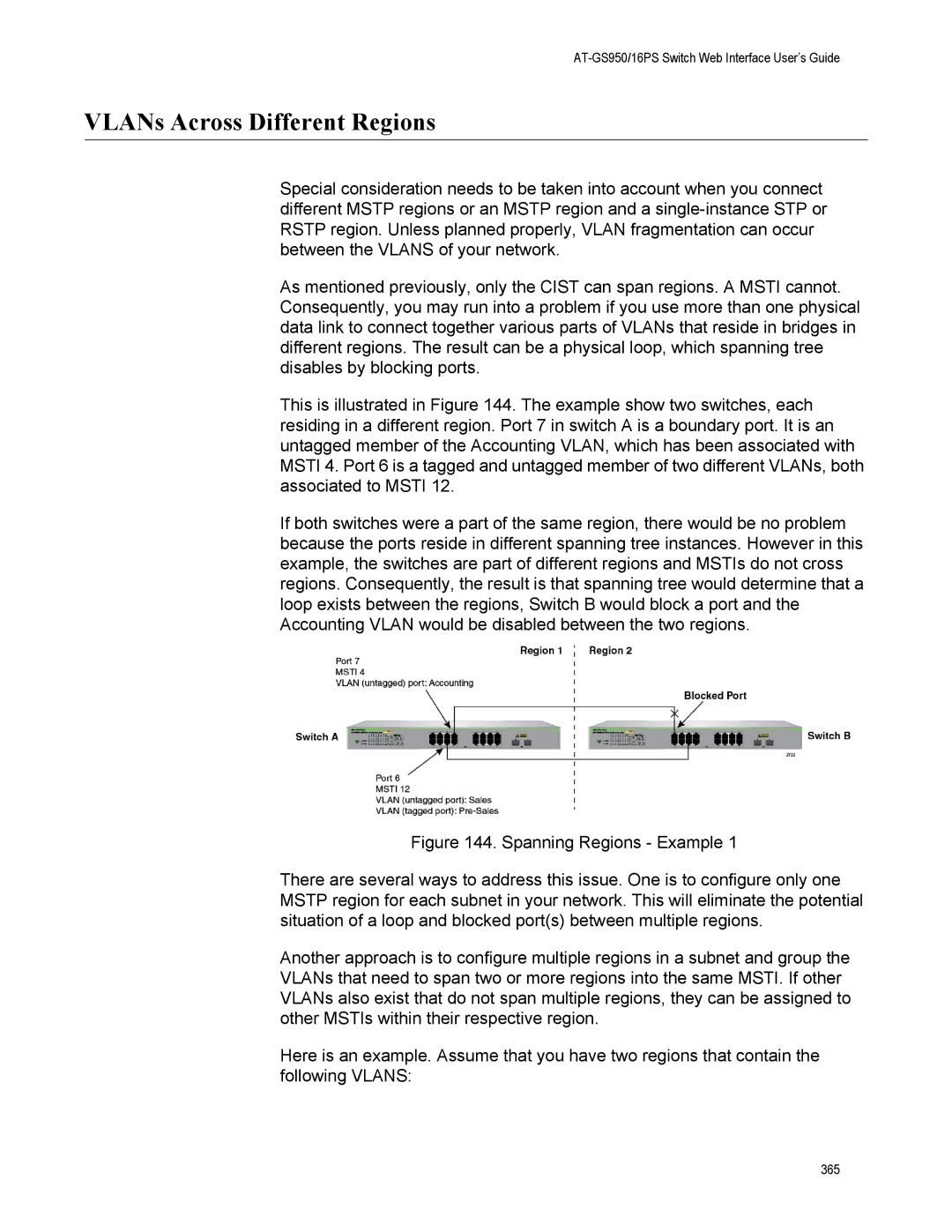
AT-GS950/16PS Switch Web Interface User’s Guide
VLANs Across Different Regions
Special consideration needs to be taken into account when you connect different MSTP regions or an MSTP region and a
As mentioned previously, only the CIST can span regions. A MSTI cannot. Consequently, you may run into a problem if you use more than one physical data link to connect together various parts of VLANs that reside in bridges in different regions. The result can be a physical loop, which spanning tree disables by blocking ports.
This is illustrated in Figure 144. The example show two switches, each residing in a different region. Port 7 in switch A is a boundary port. It is an untagged member of the Accounting VLAN, which has been associated with MSTI 4. Port 6 is a tagged and untagged member of two different VLANs, both associated to MSTI 12.
If both switches were a part of the same region, there would be no problem because the ports reside in different spanning tree instances. However in this example, the switches are part of different regions and MSTIs do not cross regions. Consequently, the result is that spanning tree would determine that a loop exists between the regions, Switch B would block a port and the Accounting VLAN would be disabled between the two regions.
Figure 144. Spanning Regions - Example 1
There are several ways to address this issue. One is to configure only one MSTP region for each subnet in your network. This will eliminate the potential situation of a loop and blocked port(s) between multiple regions.
Another approach is to configure multiple regions in a subnet and group the VLANs that need to span two or more regions into the same MSTI. If other VLANs also exist that do not span multiple regions, they can be assigned to other MSTIs within their respective region.
Here is an example. Assume that you have two regions that contain the following VLANS:
365
